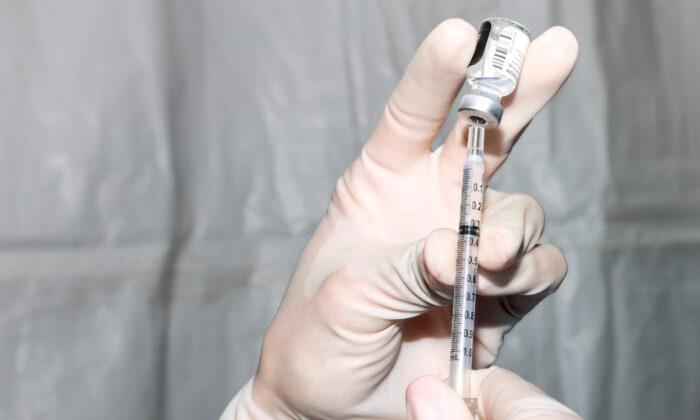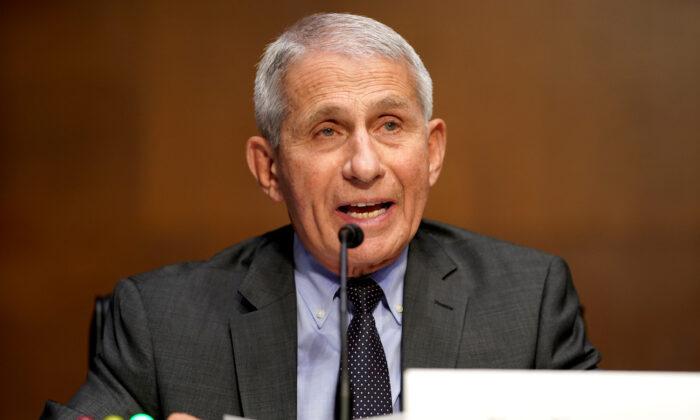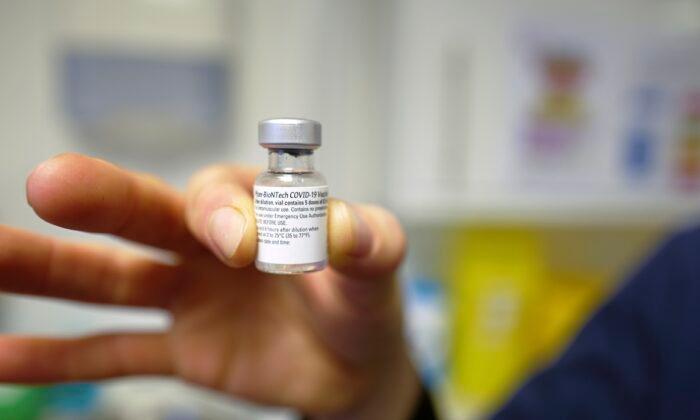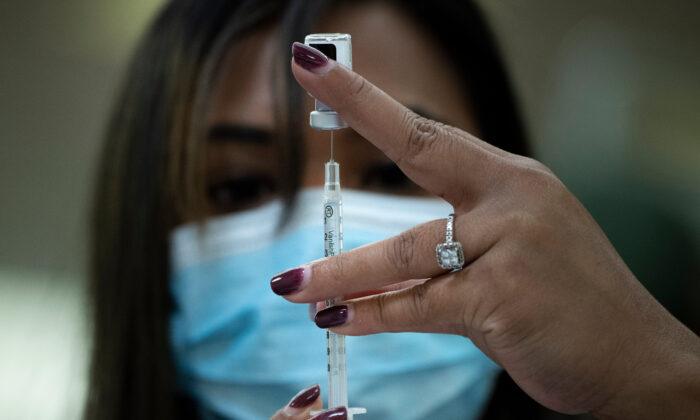The Centers for Disease Control and Prevention (CDC) told The Epoch Times in an email that as of March 8, over 92 million doses of mRNA vaccines for COVID-19 have been injected, with 1,637 deaths occurring following the injections. The CDC claims the vaccines are safe, but a comparison between the rates of deaths following the vaccines for COVID and those for influenza raises questions.
The 1136 deaths represent 4.5 percent of the total number of adverse events reports. Of those who died, 94, or 8.3 percent, died on the same day they got the shot. An additional 150 (13.2 percent) died the day after. Another 105 died two days after, and 68 died three days after.
A total of 587 (51.7 percent) died within a week, 215 died within 7 to 13 days, and 124 within 14 to 20 days.
85.8 percent of deaths occurred in people over 60. There were five deaths among those aged 20–29; 10 in those aged 30–39; 23 in those aged 40–49; and 69 aged 50–59.
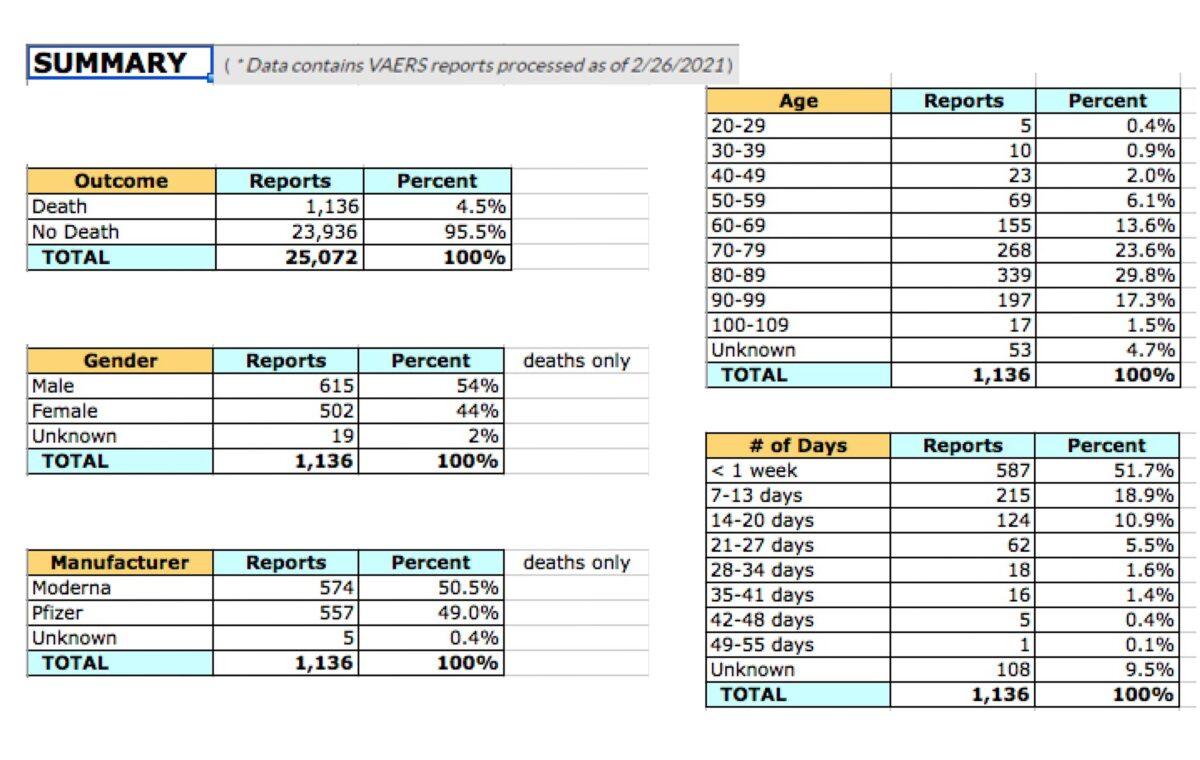
Comparison With Influenza Vaccines
Neither of the mRNA vaccines is FDA approved, rather, they have Emergency Use Approval (EUA). They represent a departure from traditional vaccines in that they do not use any part of the suspected pathogen to stimulate the immune system, but rather, nucleoside messenger RNA.“The first vaccines they are offering us are not vaccines. They are gene therapy products. They…inject nucleic acids that will cause our own cells to produce elements of the virus.”
The death rate following COVID mRNA vaccination is much higher than that following influenza vaccination.
The CDC’s data allows only a ballpark estimation of the rate of deaths following flu vaccination.
VAERS reports that in the calendar year 2019 (not the 2019-2020 influenza season) there were 45 deaths following vaccination. To provide context, in 2018 VAERS reports 46 deaths, and in 2017 it reports 20 deaths.
The 45 deaths in 2019 are occurring at a rate of 0.0000265 percent when calculated using the number of vaccines given in the 2019–2020 influenza season.
The 1,637 deaths reported by the CDC following 92 million vaccinations are occurring at an approximate rate of .0018 percent.
The VAERS System
VAERS was put in place in 1990, to capture unforeseen reactions from vaccines.The VAERS website describes the system in this way:
“Established in 1990, the Vaccine Adverse Event Reporting System (VAERS) is a national early warning system to detect possible safety problems in U.S.-licensed vaccines. VAERS is co-managed by the Centers for Disease Control and Prevention (CDC) and the U.S. Food and Drug Administration (FDA). VAERS accepts and analyzes reports of adverse events (possible side effects) after a person has received a vaccination. Anyone can report an adverse event to VAERS. Health care professionals are required to report certain adverse events and vaccine manufacturers are required to report all adverse events that come to their attention.
Deaths Reported on VAERS
On the web page “Selected Adverse Events Reported after COVID-19 Vaccination” dated March 1, the CDC states that “reports of death to VAERS following vaccination do not necessarily mean the vaccine caused the death.”“[The] CDC follows up on any report of death to request additional information and learn more about what occurred and to determine whether the death was a result of the vaccine or unrelated,” the CDC states.
“To date, VAERS has not detected patterns in cause of death that would indicate a safety problem with COVID-19 vaccines.
“A review of available clinical information including death certificates, autopsy, and medical records revealed no evidence that vaccination contributed to patient deaths.”
When asked whether the higher rate of death following COVID-19 vaccinations, compared to that for influenza, vaccines was a concern, the CDC stated in an email, “At this point in the national vaccination program, COVID-19 vaccines are being largely administered to the oldest adults in our population, those who are at high risk for hospitalization, illness and death from COVID-19 and those with underlying medical conditions which increase the risk of serious, life-threatening complications from COVID-19.”
The CDC also pointed out that, unlike other vaccines, all deaths associated with the COVID vaccines were required to be reported.
“To date, millions of people have been vaccinated with our vaccine. Serious adverse events, including deaths that are unrelated to the vaccine, are unfortunately likely to occur at a similar rate as they would in the general population.”
Moderna has not responded to requests for comment.
The VAERS database is dense with information and can be difficult for some users to follow. The Epoch Times has extracted its data as clearly as possible in charts provided in the link below.
At the link below are charts containing: on the tab “All Deaths Readable” descriptions of what happened to the patients—effects they experienced as reported by health care workers and/or relatives, or other witnesses; VAERS ID numbers (used to look up a complete file on the VAERS database); vaccination type; manufacturer; vaccination name; date received; age, gender and state of each recipient; as well as medical history; and other medications patients were taking.
